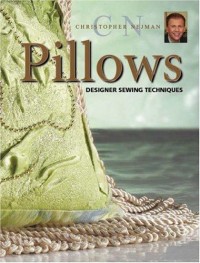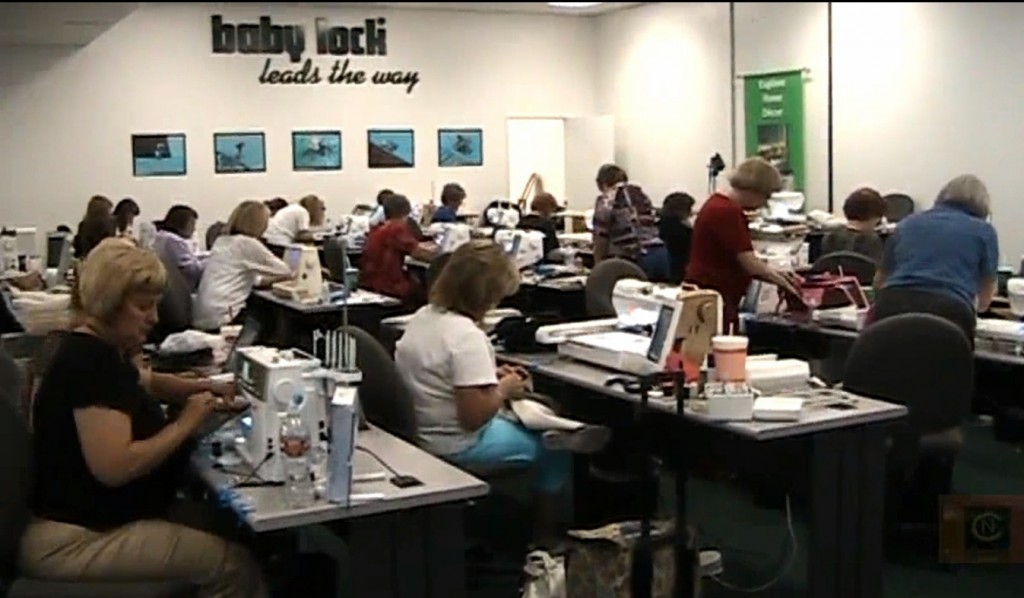I’m Darcie Griffin, aka Mimi’s Mom, and I’ve been sewing for as long as I can remember. My mom always sewed, and I picked it up from her. I continued to learn about sewing when taking Theatrical Costuming as a Dance major in college. Now I’m a mom of three (“Mimi” being my first), and I don’t currently have a career in dance or costuming! I still love sewing though. I do a little bit of everything, I think in part because I’ve learned to apply techniques from one genre to another. I really have applied concepts learned in purse making to costume design.
I’ve owned my website for a number of years now, have had the concept to do business with sewing and, more recently, blogging, but I have been struggling with starting. Getting going, finding inspiration, being persistent, it’s all holding me back from success. I’m having trouble focusing. So for my benefit, and in honor of National Sewing Month, I thought to ask some questions of Christopher Nejman, a designer and sewing educator who is passionate about inspiring others to sew.
Mimi’s Mom: What was your first memory regarding sewing? How long has it been a part of your life?
Christopher Nejman: Hi Darcie, thank you for asking to interview me, I am quite honored.
My first memory of sewing was watching my mother when came home each night after working second shift.
I would sneak out of bed and watch her. She would sit at her sewing machine each night for a couple hours and make dresses for the baby Jesus statue called the “Infant Of Prague”. I was intrigued with the shiny satins and sparkly trim she used to make the dresses. On Saturday nights, she would sit and sew while I would play by her feet with her twin lens reflex camera. I can still hear the hum of that old machine and how it made my mother so happy to create. It was her cool down period at the end of each day’s hard work.
MM: Briefly, how did you get started on your current adventures in sewing?
CN: It all came from a necessity of needing draperies for my home. From there it grew over the years. I learned all the genres of sewing I could and learned how to sew on many different types of fabric. After my first book PILLOWS, which taught a method of using fancy fabric with a felting machine for textile manipulation, I was asked to write a book on high end handbags. It has evolved to developing my own luxury handbag retail line now.
MM: Did you ever make the Star Trek costume? Since this wasn’t mentioned above, you can find out why I asked on the About section of Christopher’s website.
CN: Yes I did. That uniform was the first real garment I ever made while I was learning how to make window treatments.
MM: Why sew? Why not just buy off the rack?
CN: Because when you have a desire to be your own person, the sewing machine allows you to be able to create your own unique work.
MM: How important is having a dedicated workspace to the ability to sew successfully?
CN: Very. Having your tools organized in one place allows one to go in, and pick up where you left off. In the beginning I would use the kitchen table. But no one was able to sit down and eat! So the guest room became my sewing studio and then I enclosed the garage and that became my creative “man cave”.
MM: What are some little things that help you get organized to sew successfully?
CN: I made pouches for each of my sewing machines out of upholstery vinyl so I can put my scissors, metal ruler, seam ripper and marking pencil in. I use hook and loop tape and attach it to the side of my sewing machines. Each machine has it’s own tools and I never have to go hunting for them, which would amount to lost production time.
MM: How do you make time for sewing?
CN: I learned from my mom. It is called time management. Mom worked full time, took care of three kids, kept a spotless home, made home cooked meals, and worked in the yard every weekend with us kids. She allowed herself a couple hours each night before she went to bed to sew. Time management is the key to not only sewing, but everything we want to accomplish in life.
MM: Where do you find inspiration for creating?
CN: From life! Everything around me I see each day. Images I see, people I am with, colors that surround me. Music is also a huge inspiration when I am in the studio. The type of music I listen to will determine the outcome of my designs.
MM: What about when you want to create but don’t know where to go next? Do you sometimes get stuck? And how do you overcome that?
CN: Sometimes we drive the same road to work each day. If we take a different road to work, we will see a whole different landscape. Even picking up and holding new fabrics will inspire me by their feel and color. I am also a hair stylist, and each client I am standing behind uses a different perfume or cologne. Scents inspire me as well. Styling hair, and working with hair color transfers over to working with textiles. One genre of the arts bounces off the other.
MM: What are some of your favorite educational sources for learning new skills?
CN: have been collecting education books, videos and DVD’s since 1991. I have a library that who ever I leave to when I die, will inherit a textile college!
My favorite to date for teaching the industrial methods of sewing are “Islander Sewing Systems”. That was the first real professional set of videos I bought when I first was learning how to sew and the only educator who ever focused on industrial methods and the ergonomics of sewing.
MM: I know you are very passionate about inspiring other sewists. What are some of the ways you try to inspire, or some ways we as existing sewists can inspire the next generation?
CN: By featuring other people and their accomplishments. I love to see others succeed!
Showing people it is possible to succeed no matter what it is in life, if one has a desire to learn and apply themselves. When people see other people create, it inspires them. Showing people that they too can self sustain their own lives, and how gratifying it can be.
“Education is power, and knowledge brings independence”.
MM: What is the importance of teaching sewing to a new generation?
CN: Very!. America is bringing textile production back, and America needs skilled people to fill the work force. Teaching these skills also allows one to sustain their lives and bring independence to them.
MM: Is it all about demonstrating a value by spending time doing it ourselves? For example, they often say to parents to get their kids excited about reading, show them that you read and value it as a past time.
CN: You have to show and teach a genre to young people in a way that would interest them.
Example for sewing would be Project Runway. It has created a whole new interest of new generations to pick up the sewing machine and want to learn how to make their own garments and become fashion designers. Shows like Project Runway have taken the stereotype image out of people’s minds of grandma making quilts and that is all a sewing machine can be used for. When each designer on the show is trying to win that big cash prize, it puts a “value” on “sewing”.
So to get the new generations interested, teach them what they want to learn as per the genre of sewing. Show them the value and how they can prosper with it. Teach them what interests them in sewing, not what only interests you (the adult) as per the genre.
An example is if you are teaching a young boy, show him how to make skate board shorts, a back pack, a wallet, etc. Statistics show that he will not be interested in a quilt block or a table runner nor an apron.
MM: How does knowledge of sewing, or any skill for that matter, benefit the individual? What about the value beyond the individual?
CN: One must be taught how to use the tools in life to have success.
A great analogy would be driving a car. You need to learn how to drive before you can get a license. after you achieve that, the car will take you in life where you wish to go, be it your job, the beach, a road trip, etc. The car is a tool to your livelihood if one does not live in the big city and have public transportation. driving allows you independence.
However, not everyone can parallel park.
Per sewing and designing, that is where the artist comes out, if they can parallel park.
MM: How do we switch to the idea of sewing from scratch, to get toward thinking of making sewing easy and achievable rather than worrying about “coloring within the lines,” so to speak?
CN: Society has to allow people to live and love whom ever they wish. When loved ones allow a person to be their own individual, the artist will appear and be able to create their own design without fear of rejection for being different. Life would not progress if new ideas and designs were not constantly being born and introduced.
Our society dictates way too much on whom one should love, how one should live, etc. it smothers creativity as well. Many people need acceptance and approval. But they should know that they do not need approval to be their own individual.
MM: How do we convince others they can do it too?
CN: By allowing people to be their own individual. And that every mistake is a creative opportunity in life for something new and exciting to develop out of it.
MM: Favorite part of this job?
CN: My favorite part of this for me is not calling it my job, but my passion. One has to have a passion in life for what they do.
If it was a job, it would not be my passion and I would not have the freedom to create and be the individual artist that I am.
Thanks, Christopher! I feel reinvigorated and ready to finish organizing my own move from the guest room to the garage “woman cave” as my sewing studio. I only have half moved over and you’re right that it is so hard to get going! Your tip to create a tool pouch for each machine is great, and one I may use. I will also take to heart remembering to be an artist and an individual. Happy National Sewing Month!
You can keep up with Christopher on his website at http://www.christophernejman.com.
You can keep up with me on my site, which I now promise to keep up with myself, at http://www.mimismom.com, or on my Facebook page at http://www.facebook.com/mimismomdotcom.




